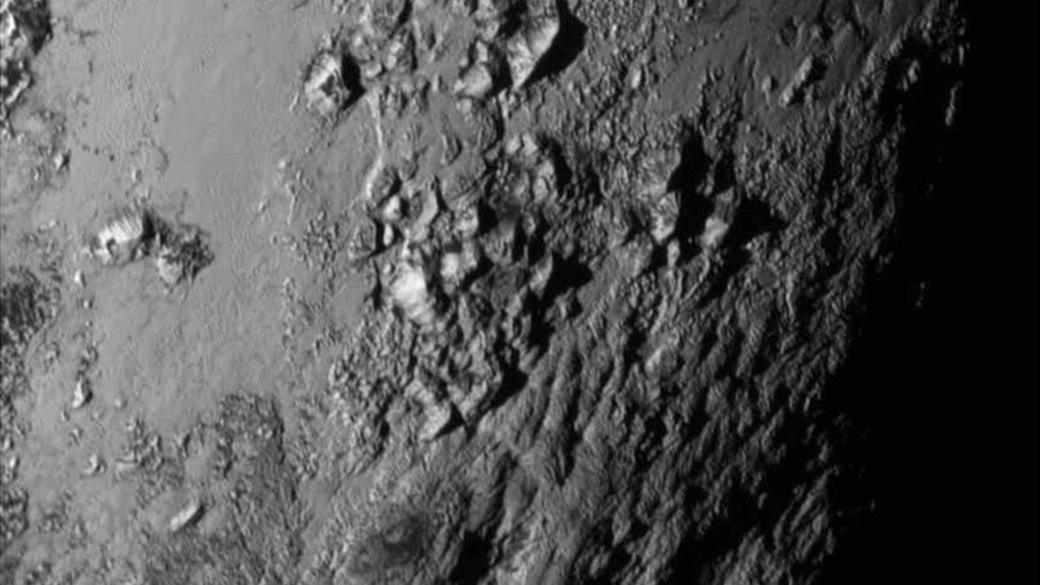What we know about Pluto so far
- Published

This area is known as the 'heart', scientists think it's made up of nitrogen ice. But they want to know why other areas on the planet are not like this one
The New Horizons spacecraft has sent back some more amazing pictures of Pluto and its five moons.
Since it flew past the dwarf planet earlier this year, the probe has been busy beaming back lots of pictures and research.
These new pictures mean we can see Pluto in much better detail, and can learn more about it's surface.
Scientists from Nasa who have been looking at the research have now been able to publish a new report with their latest findings.
How Pluto measures up
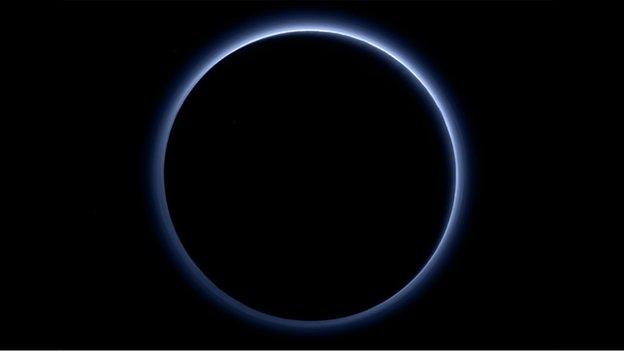
Pluto has a beautiful blue-tinged atmosphere
The New Horizons probe has provided more accurate information about Pluto's size, and we now know it's about 80 kilometres wider than previously predicted.
Nasa experts say it's around two-thirds the size of our Moon.
This means that Pluto is likely to be made up of less rock and more ice beneath its surface, according to members of the mission team.
Nasa Scientists have also been able to work out an accurate measurement of 1,187 km for Pluto's radius, that's the distance from the centre of the dwarf planet to its edge.
This measurement will help scientists to figure out how Pluto and it's moons formed, and learn more about their atmospheres.
Pluto and Charon
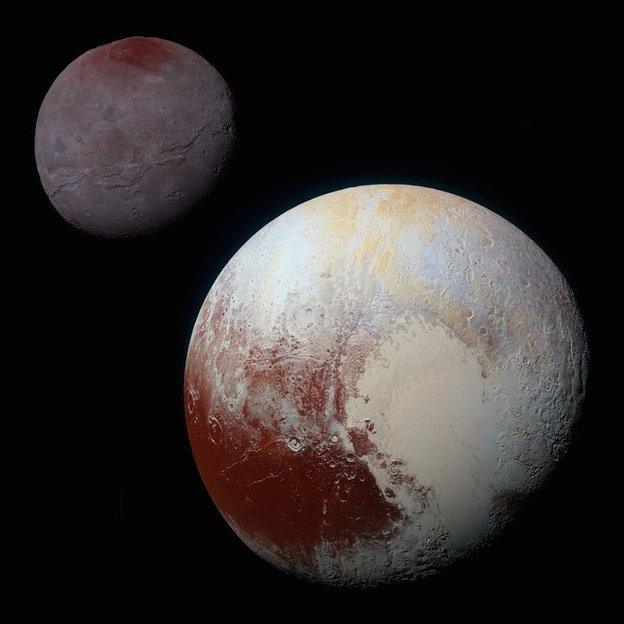
Pluto and it's largest moon Charon
Scientists have found lots of similarities between Pluto and it's biggest moon Charon - they both have icy surfaces.
Some scientists even think they may have once been joined together, and something might have broken them apart.
Charon is around half the diameter of Pluto and has a gigantic crack along its surface which is four times as long as the Grand Canyon, and twice as deep in places.
"It looks like the entire crust of Charon has been split open," said John Spencer, deputy lead for GGI at the Southwest Research Institute in Boulder, Colorado.
There are also large flat patches on it's surface, which scientists think might have been caused by a kind of "icy-volcano".
What colour is Pluto?
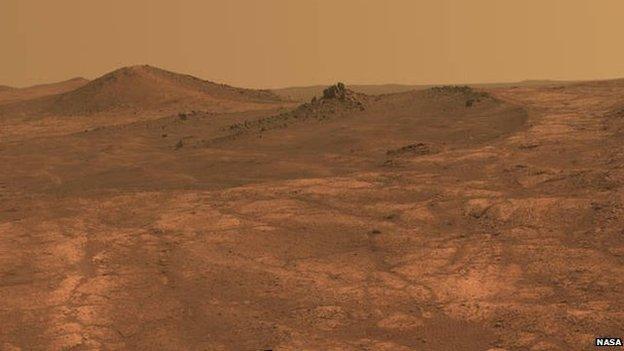
The new images suggest that Mars may not be the only red planet in our Solar System
The first image released by Nasa showed Pluto to be reddish in colour, and that it even had a heart shape on it.
But, this doesn't mean it's the same as the other famous red planet, Mars.
Both planets are red, but for different reasons, due to the ways chemicals react in their atmospheres.
John Spencer, a GGI deputy lead from Southwest Research Institute (SwRI) in Boulder, Colorado, said that the new pictures of Pluto, "reveal subtle details in a rainbow of pale blues, yellows, oranges, and deep reds."
What's the weather like?
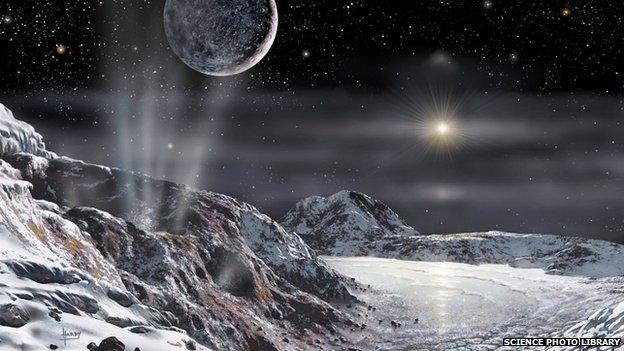
An artists impression of Pluto's snowy surface
Temperatures on Pluto are extremely cold!
They range from -172 to -238 degrees Celsius depending on where it is on its orbit.
Experts had assumed that the dwarf planet was cooling but the new data shows that this isn't happening.
Both Pluto and Charon have a water-ice rich crust.
What's the surface like?
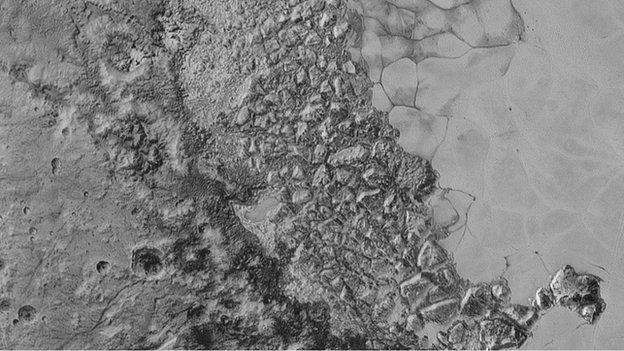
The planet has smooth areas that don't have any craters
The scientific data sent back suggests that Pluto has one of the most varied landscapes in the whole Solar System.
The images showed that Pluto has mountains, dunes, cratered areas and ones that are smooth.
The head of the mission, Prof Alan Stern, told the BBC that what he has seen so far is "amazing" and has already transformed our thoughts of the far away world.
"It certainly rivals the Earth and Mars, perhaps even occupies the number one spot for complexity of all the planets in the Solar System."
We have also learned that Pluto has a polar ice cap.
Scientists had thought this before but couldn't prove it until they saw the new images beamed back from the probe.
The journey continues...
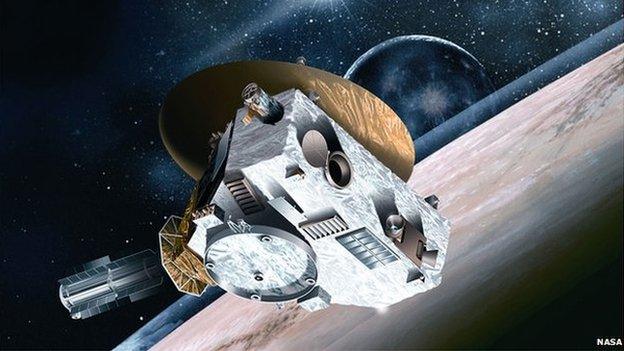
The New Horizons probe is still moving on it's journey past Pluto, heading deeper into space.
It has now travelled more than 100 million km further into space, which means it's five billion km from Earth!
- Published20 July 2015

- Published14 July 2015
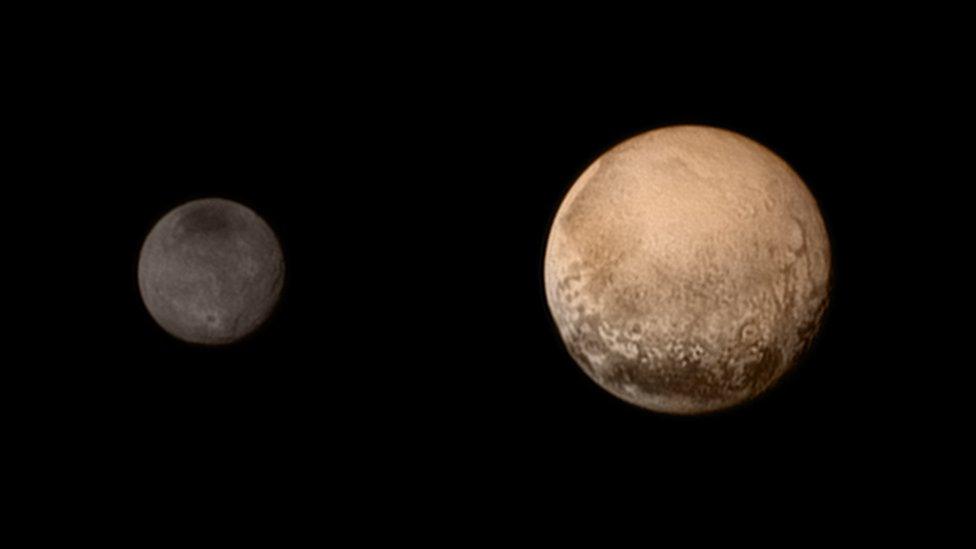
- Published16 July 2015
